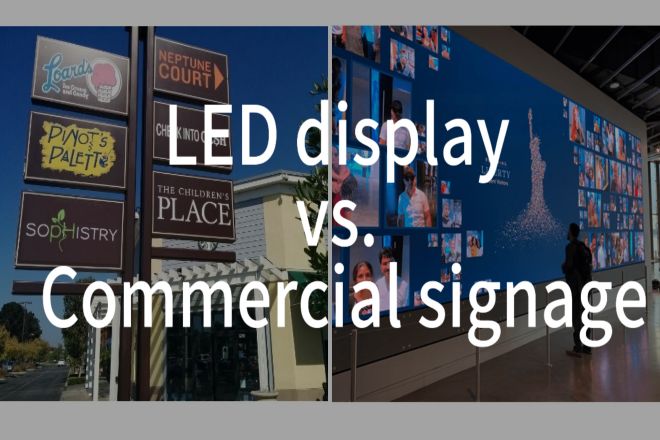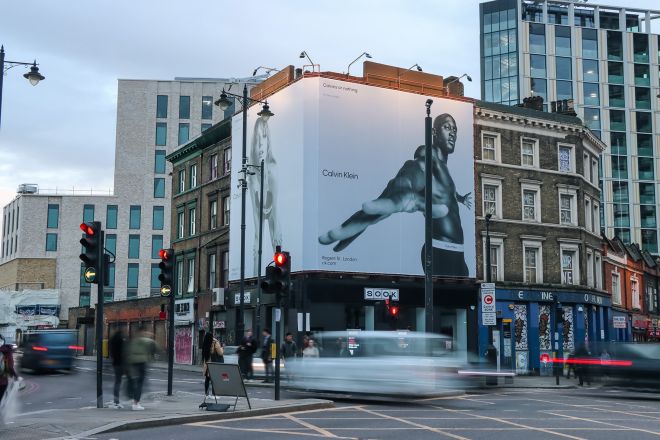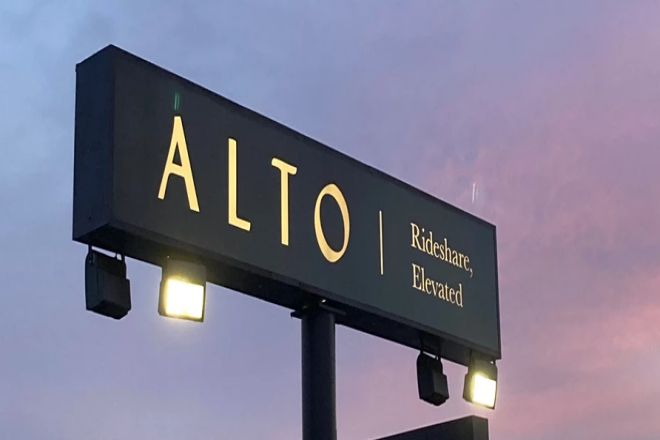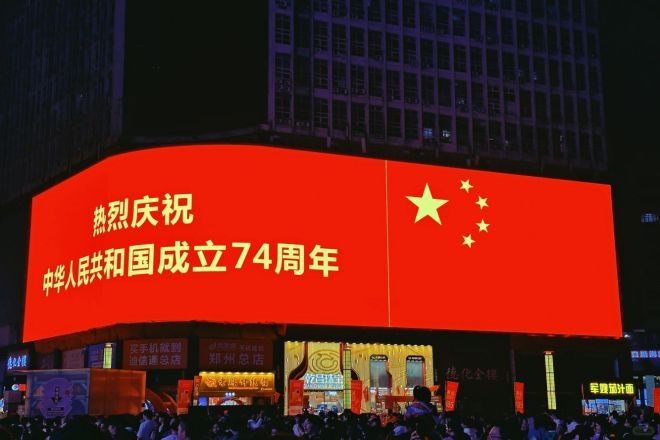序章

In a bustling commercial district, what instantly catches your eye? Is it the LEDスクリーン that flashes brilliantly or the simple and creative commercial signage?
In this era where vision determines the first impression, how can LED display and commercial signage, as a double-edged sword of commercial publicity, be cleverly combined to hit people’s hearts, enhance brand image, and promote sales growth?
This article will take you to deeply analyze the secrets of the two, revealing how they can show their talents on the commercial battlefield and, at the same time, provide you with practical insights and strategies to help you stand out in the fierce market competition. Are you ready?
1. Quickly understand LED display

Imagine how a small LED (light-emitting diode) can be transformed into a bright star that lights up the night sky of the city. Behind this is the clever application of the principle of LED technology – using electric current to stimulate semiconductor materials to emit light and efficiently convert electrical energy into light energy.
Since its birth, LED display has embarked on a journey of continuous evolution. From the initial simple display to today’s high-definition giant screen, every technological innovation is a challenge to the visual limit.
We will take you through this development process and feel how technology gives LED display screens unlimited possibilities.
1). Four major advantages of LED display screens
- Dynamic vision, attracting countless eyes:
Say goodbye to monotonous static display. LED display screens use dynamic content such as videos and animations to make advertisements “live,” instantly catch the eyes of pedestrians, and enhance brand memory points.
- 高い 輝度 and wide angle, no fear of environment:
Whether it is an outdoor billboard under the scorching sun or the atrium of a bustling shopping mall, the high brightness and wide viewing angle characteristics of LED display screens ensure that information is clearly conveyed to every corner, making brand information ubiquitous.
- Green energy saving, leading the trend:
While pursuing commercial benefits, LED display screens, with their low power consumption characteristics, actively respond to the call for green business, reduce the burden on the earth, and save operating costs for businesses.
- Flexible interaction, connecting the future:
Supporting remote control and instant content updates, LED display screens are not only the transmitter of information but also a bridge for interaction with consumers. Through creative content design, make every viewing a unique experience and deepen the emotional connection between brands and consumers.
2). LED display application scenarios revealed
The magic of LED display lies in its ability to seamlessly integrate into various business scenarios and become a bridge connecting brands and consumers.
From outdoor billboards in bustling cities to the colorful atrium decorations in ショッピングモール, from passionate sports events to star-studded concert stages, LED display screens, with their diverse application forms, give wings to commercial promotions and allow brand stories to shine in every corner of the world.
2. Quickly understand commercial signs

Commercial signs, as the name suggests, are an important carrier for businesses to display brand image and convey information. They are like the business cards of the city, quietly telling the story of the brand.
In terms of form, commercial signs can be divided into various types, such as hanging, vertical, and embedded. Each type integrates into the environment with its unique posture and attracts the attention of passers-by.
When we talk about the comparison between traditional signs and modern innovative signs, it is not difficult to find that emerging technologies such as intelligent guide systems are gradually changing the pattern of traditional signs, and through digital and intelligent means, they have given more possibilities to commercial signs.
1). The role of commercial signs
- Brand identification:
Commercial signs are an intuitive display of brand image. They are like the “face” of the brand. Through unique design elements and color matching, they deepen consumers’ memory and recognition of the brand.
- Information transmission:
Clearly and accurately conveying key content, such as business information, promotional activities, business hours, etc., is the basic mission of commercial signs. They are like silent guides, leading consumers into the world of merchants.
- Art Decoration:
Exquisite commercial signs are not only a carrier of information but also a display of art. With their unique design style and material selection, they add a beautiful landscape to the store or commercial area, enhancing the overall beauty and style.
2). Design principles of commercial signs
When designing commercial signs, personalization, material innovation, and environmental protection concepts are three indispensable elements. Personalized design can highlight the unique charm of the brand and attract the attention of consumers.
Material innovation makes the sign more durable and beautiful, and the environmental protection concept reflects the merchant’s social responsibility. At the same time, with the in-depth development of digitalization and intelligentization, the design and application of commercial signs have also ushered in new changes.
The addition of high-tech elements such as intelligent guidance systems and interactive touch screens not only improves the practicality of signage but also makes commercial spaces full of a sense of the future and technology.
These changes not only meet consumers’ pursuit of new things but also bring more business opportunities and brand value to businesses.
3. In-depth comparison of LED display screens and commercial signage

In the stage of commercial publicity and information transmission, LED display screens and commercial signage each play an important role. They have both similarities and characteristics. The following is a detailed comparison of the two in multiple dimensions:
1). Technical principles and forms of expression
- LEDディスプレイ画面:
Based on LED (light-emitting diode) technology, it displays images, text, videos, and other content by controlling the light emission of semiconductor materials.
Its high brightness, high definition, wide 視野角, and other characteristics make LED display screens widely used in outdoor advertising, large-scale events, sports events, and other occasions.
- Commercial signage:
Traditionally, commercial signage is mostly made of metal, acrylic, wood, and other materials and presents brand logos, text information, and other content through printing, engraving, and other processes.
Modern commercial signage is gradually incorporating digital and intelligent elements, such as intelligent guide systems and interactive touch screens, but it is still mainly a static display.
2). Information dissemination and visual effects
- LEDディスプレイ画面:
It can play dynamic content such as videos and animations, has strong visual impact, and can quickly disseminate information, and can quickly attract and capture the audience’s attention.
Its high definition and wide viewing angle characteristics ensure that information can be clearly presented at different distances and angles.
- Commercial signage:
It is mainly a static display. Although it can pursue exquisiteness and personalization in design, it is relatively weak in the dynamics and visual effects of information dissemination. However, commercial signage still has unique advantages in brand recognition and artistic decoration.
3). Application scenarios and flexibility
- LEDディスプレイ画面:
It is suitable for 屋外看板、 ショッピングモール atriums, スポーツ イベント、 concert stages, and other scenarios. It is flexible to install and can adjust the size and shape according to actual needs to meet the display needs of different occasions.
At the same time, LED display screens support remote control, and content updates are convenient and fast.
- Commercial signage:
It is usually installed in fixed locations such as store entrances and commercial blocks for brand promotion and information transmission. Although the design can be personalized, the application scenarios and flexibility are relatively limited.
4). Cost and maintenance
- LEDディスプレイ:
The initial investment cost is high, including equipment purchase, installation and commissioning. But in the long run, due to its low power consumption and long life, it can save a certain amount of operating costs.
In addition, the maintenance of LED display is relatively simple, and generally only regular inspection and maintenance are required.
- Commercial signage:
The production cost is relatively low, but considering factors such as its service life and replacement frequency, the long-term cost may not be low.
At the same time, the maintenance of commercial signage also requires certain attention, such as keeping it clean and preventing damage.
5). Development trend
- LEDディスプレイ:
With the continuous advancement of technology and the continuous expansion of application fields, LED display screens are moving towards higher definition, larger size, and more flexible forms.
At the same time, the trend of intelligence and networking is becoming increasingly obvious, providing more possibilities for LED display screens in commercial publicity and information transmission.
- Commercial signage:
Although traditional commercial signage may be challenged in some aspects, its brand recognition and artistic decoration functions are still irreplaceable.
In the future, commercial signage may incorporate more digital and intelligent elements to meet consumers’ needs for fresh experiences and personalized services.
4. LED display screens and commercial signs: how to choose

When choosing between LED display screens and commercial signs, we need to consider multiple factors, including usage scenarios, budget, publicity effects, technical characteristics, and long-term maintenance. Here are some specific suggestions to help you make a more informed choice:
1). 使用シナリオを検討する
- 屋外環境:
If you plan to advertise in outdoor environments (such as streets, squares, shopping mall exteriors, etc.), LED display screens are the first choice due to their high brightness, wide viewing angle, and strong weather resistance.
It can ensure that the content can be clearly displayed even under direct sunlight, attracting the attention of passers-by.
- 屋内環境:
For indoor places such as shopping mall interiors, exhibition halls, and conference rooms, commercial signs may be more suitable. They can enhance the brand image and spatial beauty through exquisite design and personalized content.
2). Consider publicity effects
- Dynamic display:
LED display screens can play dynamic content such as videos and animations, which have stronger visual impact and appeal than static commercial signs. If you want to convey complex information or create a specific atmosphere, LED display screens are a better choice.
- Static display:
If the promotional content is relatively simple and does not need to be updated frequently, commercial signs may be more economical and practical. They can quickly convey brand information through concise and clear text and patterns.
3). Consider budget and cost
- 初期投資:
The initial investment cost of LED display screens is usually higher than that of commercial signage, including equipment purchase, installation, and commissioning.
Therefore, with a limited budget, it is necessary to weigh the relationship between publicity effect and cost.
- 長期運用:
Although the initial investment in LED display screens is high, their low 消費電力 and long life can help reduce long-term operating costs.
At the same time, LED display screens support remote control and content updates, which is convenient for management and maintenance.
4). Consider technical characteristics and maintenance
- Technological advancement:
As a representative of modern display technology, LED display screens have higher technical content and more functional characteristics.
For example, some high-end LED display screens support touch, interaction, and other functions, which can enhance user experience.
- メンテナンスの利便性:
The maintenance of LED display screens is relatively simple, and generally only regular inspection and maintenance are required. The maintenance of commercial signage may require more manual operations and more frequent replacement.
結論
In summary, LED display screens and commercial signage are the two pillars of modern commercial publicity, each with its unique charm and advantages, and play an indispensable role on the commercial stage.
LED display screens, with their high-tech dynamic display capabilities, have brought unprecedented visual impact and interactive experience to commercial promotions, while commercial signage, with its classic design language and information transmission function, has firmly established the brand image and guided consumers’ sight and footsteps.
最後に、LEDディスプレイスクリーンについてさらに詳しく知りたい場合は、 ご連絡ください。
